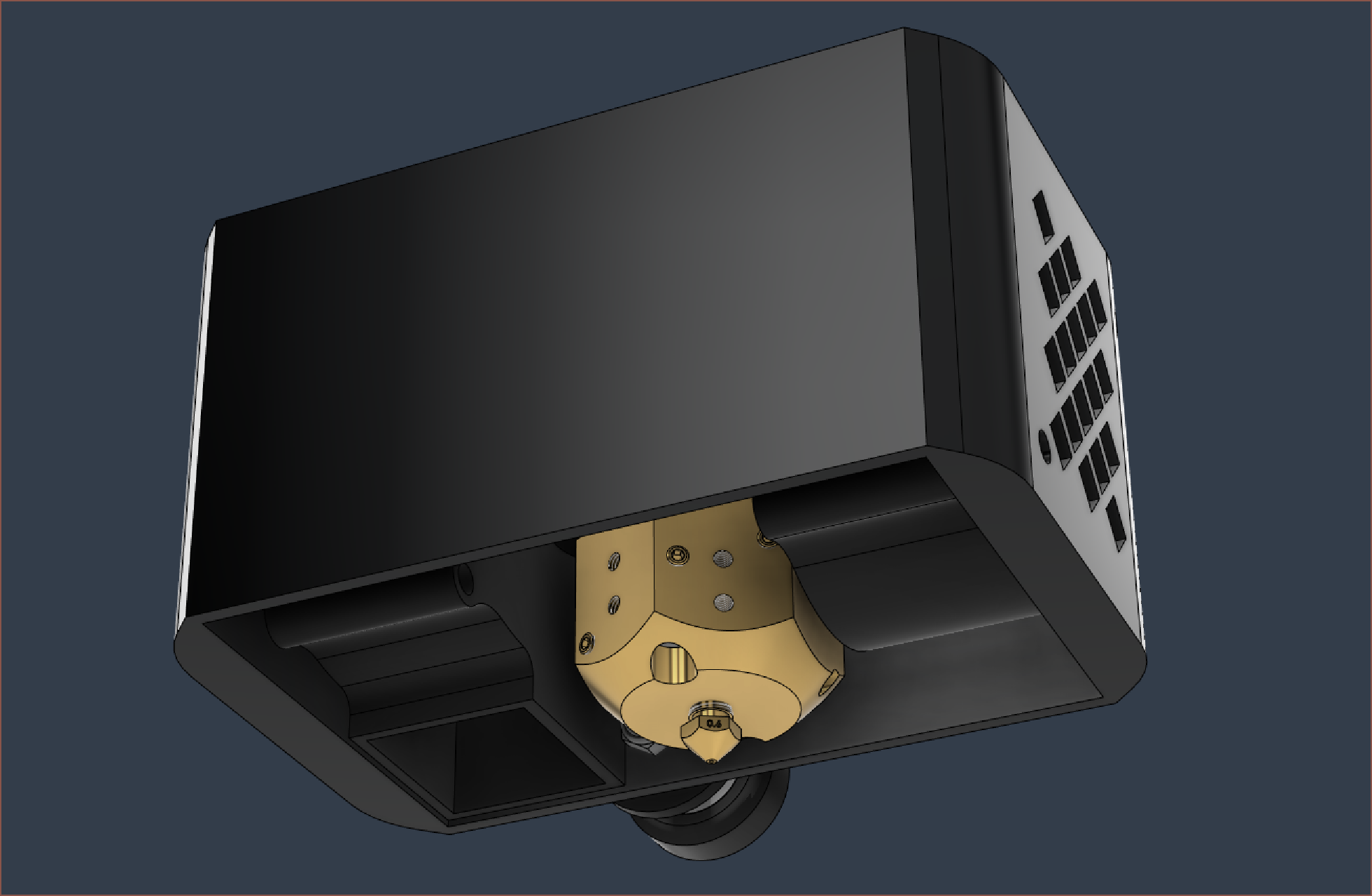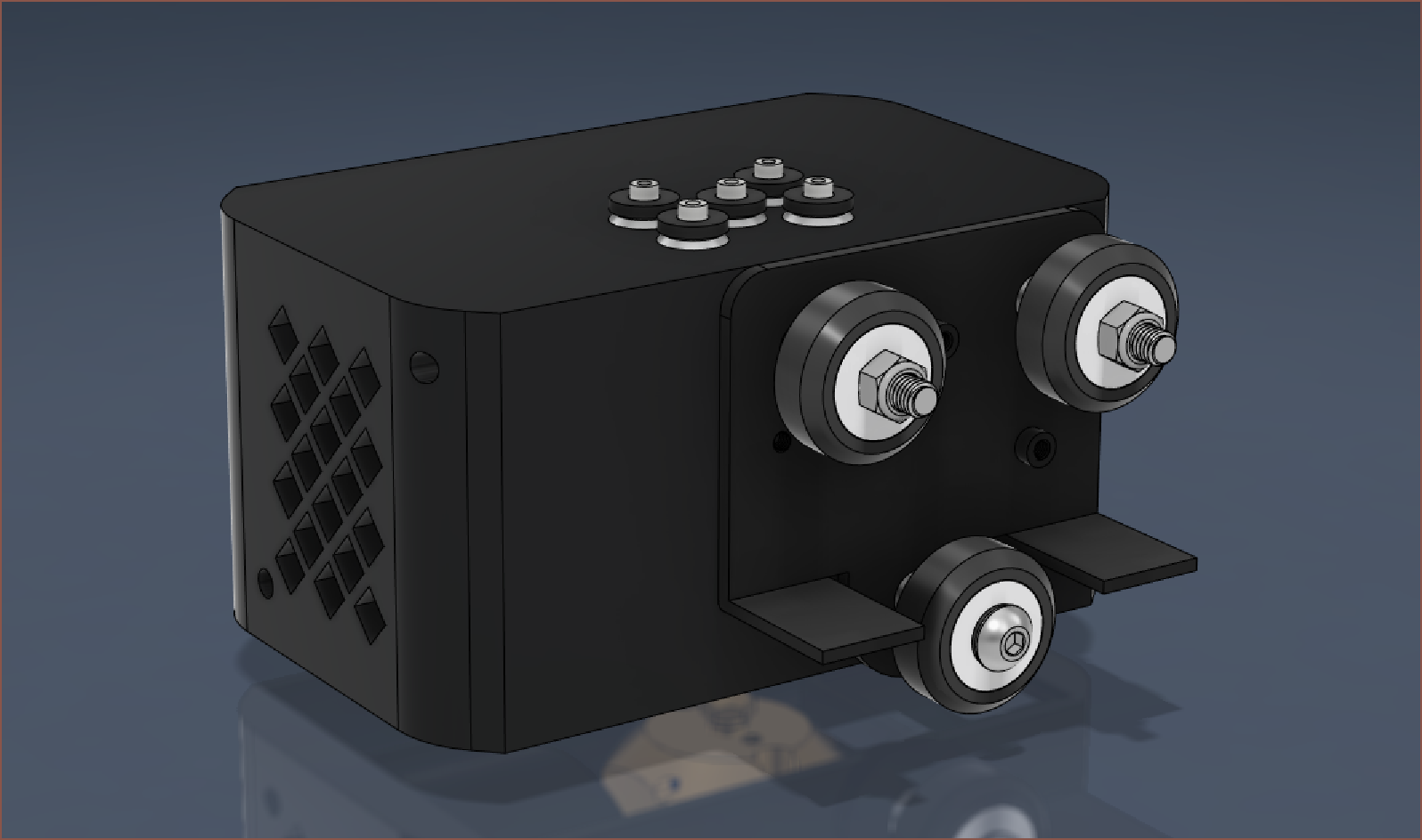
Before working on the mounting solution, I thought it would be a tad better to model what I want the hotend assembly to look like at the end of the day.
It would've been nicely compact actually if it wasn't for my medling cooling requirements. Over the years, I've found (dual) 40mm blowers (both 10 and 20mm thick) to be inadequate for cooling (fast 0.6mm track width) prints. 5015 is so large in diameter that it's usually more benificial to go straight on up to 6028 blower fans which boast 3 - 4x more airflow.
In this design, one blower is for part cooling, and the other is to thoroughly cool the heatsinks (the airflow does a U turn).

I'm just slightly worried that this design will collide with something on the X axis. I remember that I ran into something when I tried the cover for the Revolving Hotend.
[23:20]
Other than "because I have space", part of the reason why I'm using a 6028 for cold-end cooling is because unused filament paths will conduct heat upwards, facilitating a clog. I also don't want to deal with watercooling so I might as well try something with more oompf than a 30mm or 40mm radial fan. Additionally, I'm planning not to use the auto-fan feature, so that I can turn off the fan during printing. Why would I want to do this? To allow heat to conduct higher up the throat and hopefully soften the filament that would've otherwise been stuck in place.
It might be necessary to use the #SecSavr Select [gd0091] as an automatic input blocker, where 4 inputs have CMYK and the other 4 are stainless steel wires (or something that doesn't conduct heat well, but also doesn't melt and/or degrade at normal printing temperatures). Ideally, there'd be a firmware timer that automatically blocked the input if it hasn't been used for a specified amount of time, with the target balance being long enough that the materials aren't constantly switching out, but short enough to mitigate clogs. This point and the paragraph above were learnt from reading old deckingman posts about his research into mixing hotend printing.
 kelvinA
kelvinA
Discussions
Become a Hackaday.io Member
Create an account to leave a comment. Already have an account? Log In.